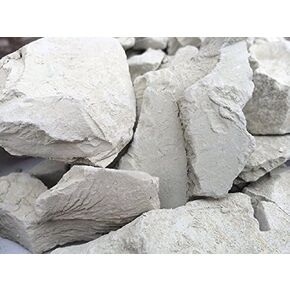- Shopping, made easy.
- /
- Get the app!
The crispy and homogeneous chalk of medium hardness. . When chewed, light fine grains are felt, which get soaked and dissolved completely. The Monastery chalk features a taste of cardboard, paper, the post-rain flavor and the wet concrete floor. Pleasant light sweetness in the end.
The monastery appeared on a snow-white, rocky, chalk river bank in the 16th century. It looks like it grew out of these rocks; in the bulk of which caves, cells and temples of chalk were cut. A huge part of the monastery is situated inside the chalk mountains, where monks and hermits used to spend their lives. This is where the Monastery chalk is found.
The Monastery chalk mined near this monastery is clean, healthy and absolutely edible. There is even a popular belief that, if you have a bad tooth, you should pray and then gnaw with the tooth a piece of the monastery's chalk. Perhaps this is why a chalk column located in the underground church, on which, as a legend says, a St. Nicholas icon had appeared, was almost completely gnawed by pilgrims and ready to collapse. After that, the monks surrounded it with bricks. Other legends provide evidences too. According to one of them, monks living in ancient monasteries ingested the chalk to boost health improvement. The same legend says that the genuine monastery chalk is still produced by monks manually, in a traditional way, in this unique, clean environment. The sanctified chalk contains a unique ingredient - silver particles, which have penetrated into it from water.
 BENTONITE Edible Clay Chunks Natural for Eating, 4 oz (113 g)
KWD 4.500
BENTONITE Edible Clay Chunks Natural for Eating, 4 oz (113 g)
KWD 4.500
 BENTONITE Edible Clay Chunks Natural for Eating, 8 oz (220 g)
KWD 6.500
BENTONITE Edible Clay Chunks Natural for Eating, 8 oz (220 g)
KWD 6.500
 Kaolin Edible Clay Chunks (lump) Natural for Eating (Food), 8 oz (210 g)
KWD 6.500
Kaolin Edible Clay Chunks (lump) Natural for Eating (Food), 8 oz (210 g)
KWD 6.500
 Sapphire Edible Clay Chunks (lump) Natural for Eating (Food), 4 oz (113 g)
KWD 4.500
Sapphire Edible Clay Chunks (lump) Natural for Eating (Food), 4 oz (113 g)
KWD 4.500